
With orbital operations well underway, China is considering a further further expansion to its Tiangong space station as well as opening the station to both the nascent Chinese commercial space sector and international participation.
In particular, the latest 5-year plan produced by the China Manned Space Agency (CMSA) and the China Academy of Space Technology (CAST) for the period 2026-2030, appears to confirm statements made in December 2022 and February 2023 that China is considering expanding the station with the addition of a fourth module.
Exactly what form the new module will take has been open to debate for several months, with initial reports suggesting it would be physically and functionally similar to the existing three modules – the Tianhe-1 core module and the Mengtian and Wentian science modules – with a mass of around 21-22 tonnes, and up to 51 cubic metres of internal habitable space.
Drawn from images captured by multiple satellites in orbit, this annotated animation provided by Australia’s HEO Robotics, a company specialising in “non-Earth imaging” (i.e. capturing images of object in space using other satellites) showcases the assembly of the Chinese Space Station from September 2021 through until the arrival of the Shenzhou-14 mission in June 2022. Credit: HEO Robotics
However, more recently, it has been suggested that the additional module would be of an entirely new design, providing as much interior space as Tianhe-1, together with a new 6-way multi-function docking adapter and support scientific payloads being mounted on its exterior.
It now appears China is leaning towards this second option, with Wang Xiang, the director of space station systems at CAST indicating the increased docking capability and internal space will achieve a three-fold design function:
- It would allow more vehicles to dock with the station together with more research space and – Wang has suggested – room for space tourists to visit the station as well.
- It would allow the station to act as a hub for the testing and development of vehicles and technologies intended to help expand China’s lunar and deep space ambitions.
- It could potentially encourage greater international participation in the Chinese space programme as well as encouraging the Chinese commercial space sector.

With regards to the latter point, Ji Qiming, an assistant director at CMSA has indicated that CMSA will be accepting proposals from the Chinese commercial space sector for vehicles capable of resupplying the station with consumables. Additionally, he indicated that China has repeated its offer to the international community to join with it in research opportunities on the station. This has been offered in two ways: cooperation in research through the provision of experiments, and the direct participation of astronauts to join Chinese tiakonauts in training for, and participating in. flights to and from the station from China.
The move towards greater international cooperation is seen by some as a significant game-changer for the Chinese space programme, further opening the door to build on agreements with a number of European nations, together with Mexico, Japan and Peru and with the UN to fly experiments on Tiangong and an agreement with Italy which includes flying astronauts to the station. In particular, China may be looking to court partnerships with India and Pacific Rim nations such as Australia and New Zealand, both of whom are looking to expand their involvement in space exploration and development.
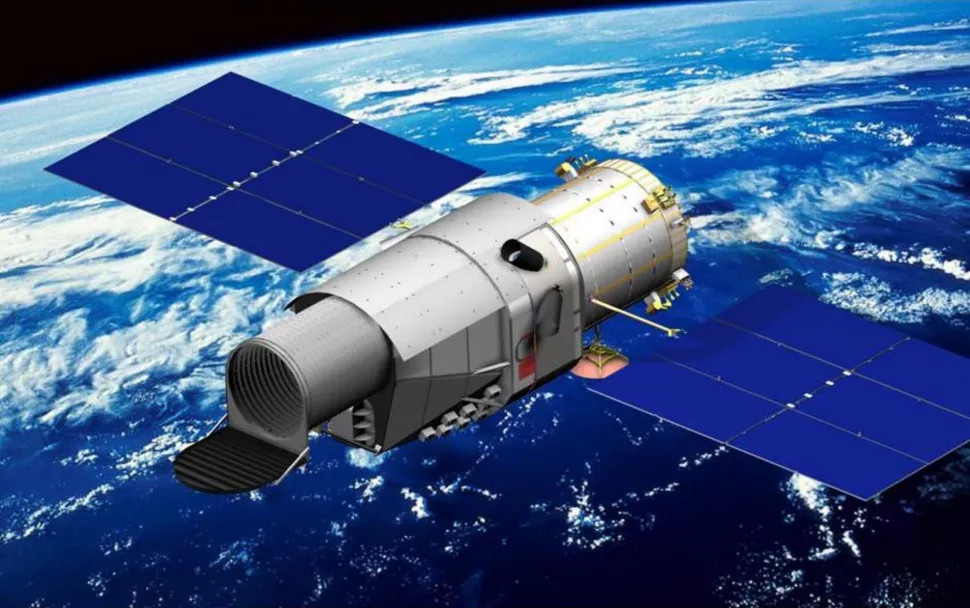
No launch date for the module has been given, although if it is to be of an entirely new design, it would be unlikely to be ready for launch before the early 2030s.
In the meantime, and as soon as the end of 2024, Tiangong will be indirectly expanded with the launch of the Xuntian Chinese Survey Space Telescope. This is a free-flying observatory which will be placed in a co-orbit with Tiangong, allowing it to operate both independently but also periodically dock with the station for servicing.
NASA’s DSN at Risk of Collapse?
One of the most critical elements of NASA’s infrastructure is, oddly enough, one that tends to be the most taken for granted. It’s not a launch centre or mission control facility or a research centre or astronaut training facility. It’s most obvious elements are three huge communication centres located in California, Australia and Spain. It is known by the simple acronym DSN, meaning Deep Space Network – and without it, NASA would be unable to maintain contact with any of its missions beyond Earth orbit.
More than 50 years old, the core of DSN has been in service since before Apollo. While its primary function is data communications and relay, the DSN also carries out science of its own when capacity allows, in the form of radar and radio astronomy. However, while the intervening years the broader supporting infrastructure for DSN communications between its various centres has been updated, the facilities at the centres – the primary centres have been under increasing strain, whilst at the same time, the budget allocated for both DSN operations and systems development / enhancement – has been steadily decreasing year-on-year. In 2010, for example, the DSN budget was US $250 million. Ten years later, it was down to US $200 million. As a result of this, DSN’s core capabilities have been steadily degrading.
This came to a head during the 25-day Artemis 1 mission in November / December 2022. This required dedicated DSN activity across 1774 hours – 903 hours for tracking the Artemis 1 mission, and the rest in monitoring the 8 cubesats launched as secondary payloads with the mission – the majority of which saw the DSN operating in a “search and rescue” mode, simply monitoring the cubesats in case any of them ran into problems. As a result, NASA science missions such as those operating around Mars or at the outer edge of the solar system or beyond, and so on, were almost completely denied any data communications through the DSN.

Warnings that the DSN is over-subscribed have been available for some time. As recently as July 2023, NASA’s own Office of Inspector General (OIG) issued a report saying budget reductions mean that the network will remain over-extended throughout the rest of the 2020s and into the 2030s, even if work on updating it is prioritised.
Whilst attempts have been made to ease some of the load – a cloud-based data communications and data handling system was introduced to support the Goldstone, California DSN site, even these have struggled to keep pace with emerging technologies such as cubesats. This was again demonstrated during Artemis 1 when a system designed to handle some of the cubesat data load itself suffered a 33-hour outage, belatedly forcing NASA to realise that over-extending data communication through multiple additional rideshare payloads during a major undertaking such as an Artemis flight perhaps isn’t a good idea.
Even so, the demands of Artemis remains a major concern to those responsible for DSN, because it has the potential to cripple other missions; something which has led to the formation of a committee to outline a 4-point plan to help combat the issue.
When Artemis comes online, everybody else moves out of the way, and it’s an impact to all the science missions We either have to clear everybody off the network or we struggle — and our experience with Artemis 1 was struggling with trying to move everybody around.
– Suzanne Dodd, director of NASA’s interplanetary network directorate
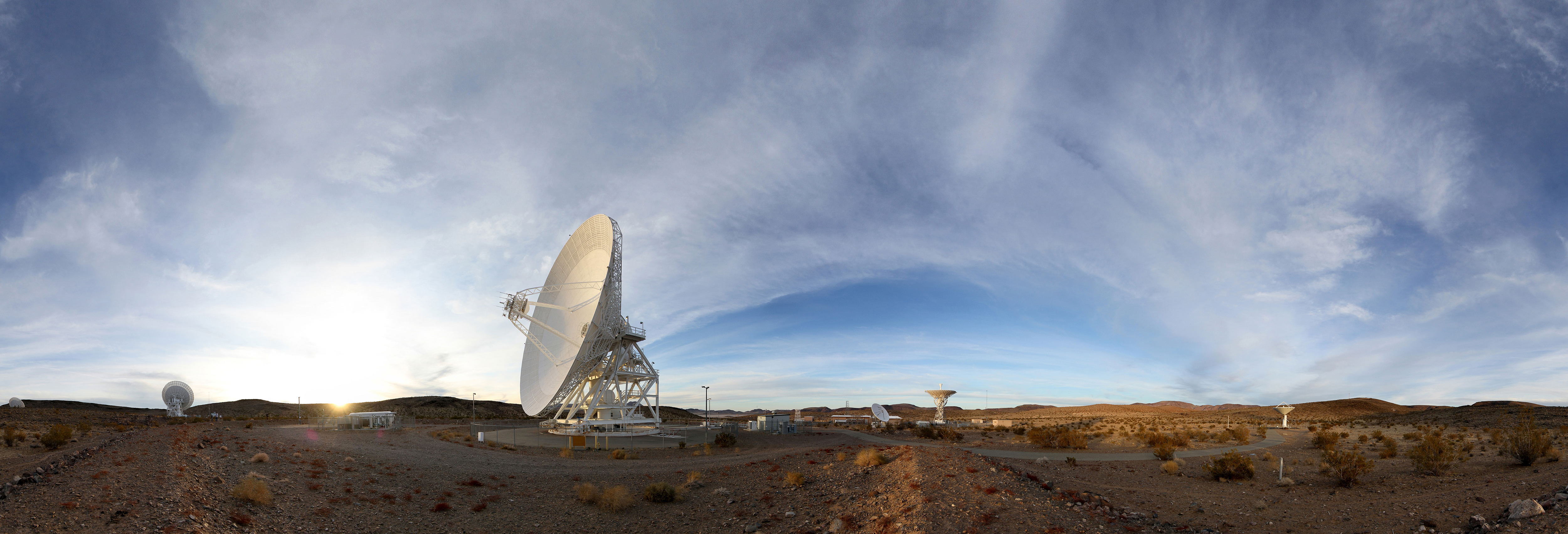
Some of the recommendations under consideration include implementing a new suite of six 18-metre antennae called LEGS at the DSN Goldstone centre which will be used solely for use by the Artemis programme, and also the implementation of a network of relay satellites in orbit around the Earth and Moon to handle more of the data load required by Artemis.
However, these solutions require a budget expenditure which NASA currently doesn’t have, nor is it likely to receive in the foreseeable future, and time to implement. And even then, programmes like LEGS fall short of the overall data capabilities NASA will require for long-term human operations on the Moon.
We have reached a really critical point with the DSN’s aging infrastructure. This scares us very much. We’ve clearly gotten a five-alarm fire bell.
– Sandra Cauffman, deputy director of NASA’s astrophysics division
Both Cauffman and Dodd are members of the committee responsible for making recommendations like LEGS to NASA, so that the agency can consider options and request funding. However, before even this can be done, the committee can do even this, the recommendations they make must be reviewed and approved by the NASA Advisory Council, which is not scheduled to meet again before November, which means NASA will likely be unable to make any formal requests for increasing DSN’s budget until fiscal year 2025.
Lunar Updates
It was potentially a short, but glorious time in the Sun for India’s Pragyan rover, part of that nation’s Chandrayaan-3 mission which successfully landed within the lunar South Polar Region on August 23rd, 2023 (see: Space Sunday: roving on the Moon). On September 3rd, just 10 days into the planned 14-day surface mission, the little rover was ordered to park up and put itself in hibernation.
The reason for this was simple: the rover had completed its initial science mission, and the Indian Space Research Organisation (ISRO) hopes that by shutting it down and allowing it to maintain full battery power, it may survive the 14-terrestrial day “night” on the Moon and be successfully re-awakened when the Sun again starts to provide power to its solar array around September 22nd.
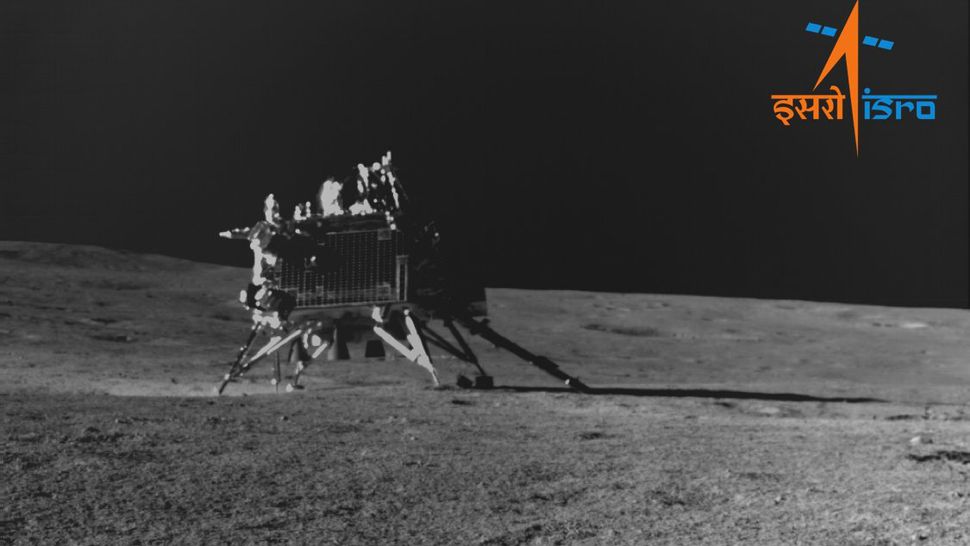
The rover caught the imagination of people across social media as it trundled across the lunar landscape and clocking up a total distance of 100 metres travelled. During these wanderings it gathered data on its surroundings, including measurements on conditions below the surface – part of a search for water ice frozen just under the regolith. The overall results of the rover’s findings have yet to be released by ISRO (as they are continuing to be analysed). During its meanderings, the rover also took a peek over the lip of a 4-metre wide impact crater on August 27th, before backing away and continuing on its way.
The reason it is uncertain the rover will survive the darkness of the lunar night is that temperatures will plunge as low as -120oC, and the power required to keep the rover warm enough to prevent its electronics from freezing may well beyond the capabilities of its batteries. However, ISRO are hoping that, like China’s Yutu-2 rover, Pragyan might prove to be more durable than expected.

While the world’s focus may have been on the rover, the Vikram lander has hardly been twiddling its electronic thumbs. Even as Pragyan was starting its explorations, Vikram had achieved a further lunar first: recording the surface temperature of the lunar South Polar Region by using sensor placed directly on the surface. This was achieved through the deployment of the ChaSTE (Chandra’s Surface Thermophysical Experiment) science payload, which is also capable of drilling up to 10 cm below the surface. It revealed that while the surface temperature was +60ºC, just 8cm below the surface this has fallen to -10ºC, helping to confirm expectations as to the broad thermal conditions humans are liable to encounter during upcoming polar exploration missions.
A second science package deployed to the Moon’s surface by Vikram, the Instrument for Lunar Seismic Activity (ILSA), and which intended to measure the seismic activity around the landing site, was able to record Pragyan’s motions and appears to have recorded and actual seismic event, although this has yet to be confirmed by ISRO.
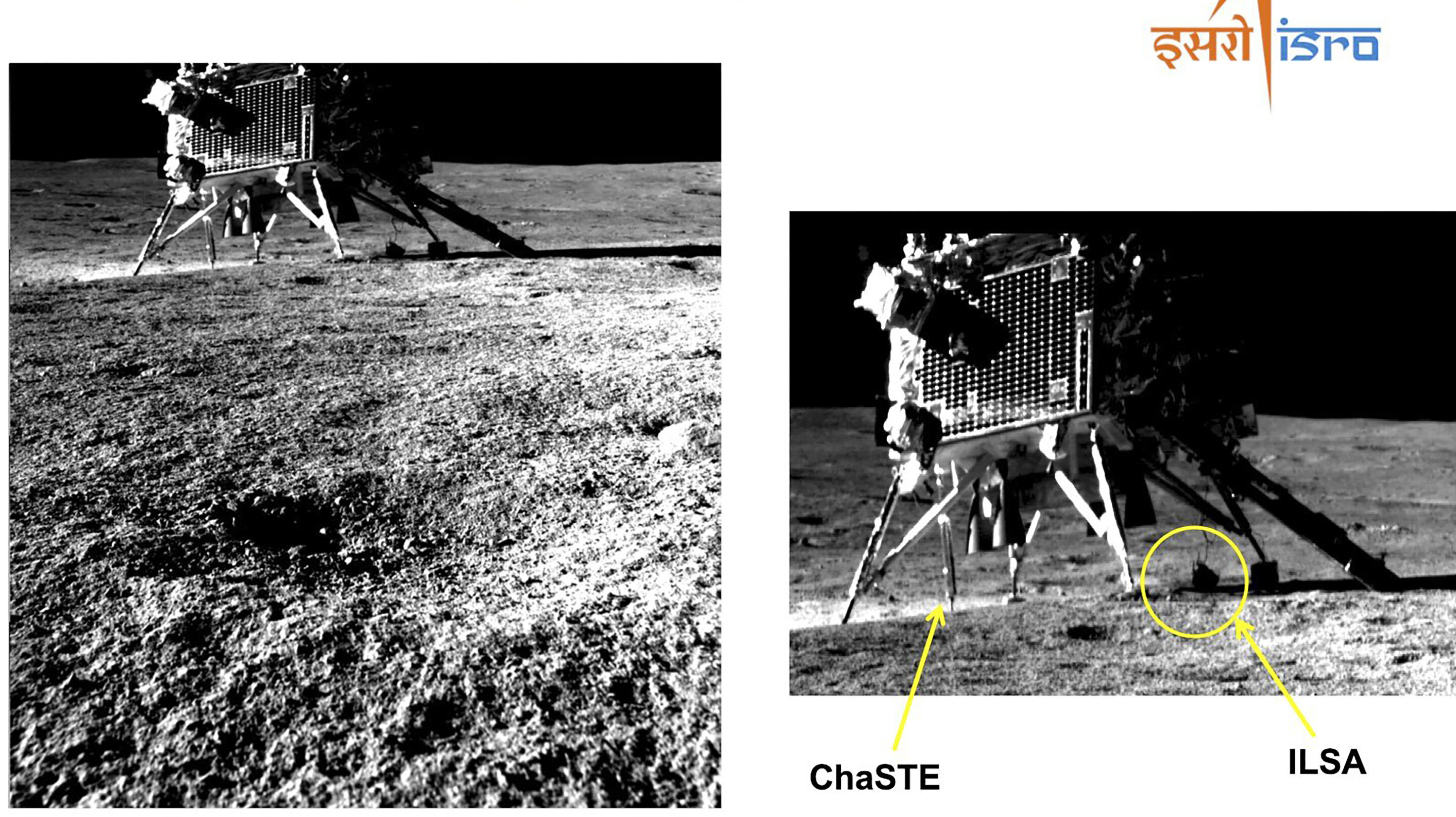
Additionally, both the lander and the rover have detected the presence of sulphur aluminium, iron, calcium, chromium, titanium, manganese, oxygen and silicon within the lunar regolith – all of which (allowing for the quantities in which they exist) could be of significant use by humans living and working within the region.
Meanwhile, further to the north of the Moon, NASA has imaged the last resting place Russia’s Luna-25 mission, which had it succeeded, would have seen that country resume missions to other bodies in the solar system for the first time in 34 years following the Phobos 2 mission to Mars, and 47 years since its last visit to the Moon. It is a mission which abruptly to an end when, during its landing attempt on August 19th, it suffered a malfunction and struck the Moon whilst still travelling at considerable speed.
On August 22nd, Roscosmos indicated the lander had crashed into the inner rim of the crater Pontécoulant G, located at 57.86º south and 61.36º, about 400 km short of its intended landing site. As a result, NASA tasked their Lunar Reconnaissance Orbiter (LRO) to make a pass over the area on August 24th. and image it for signs of impact – images which could be compared with those previously captured of the area by LRO.
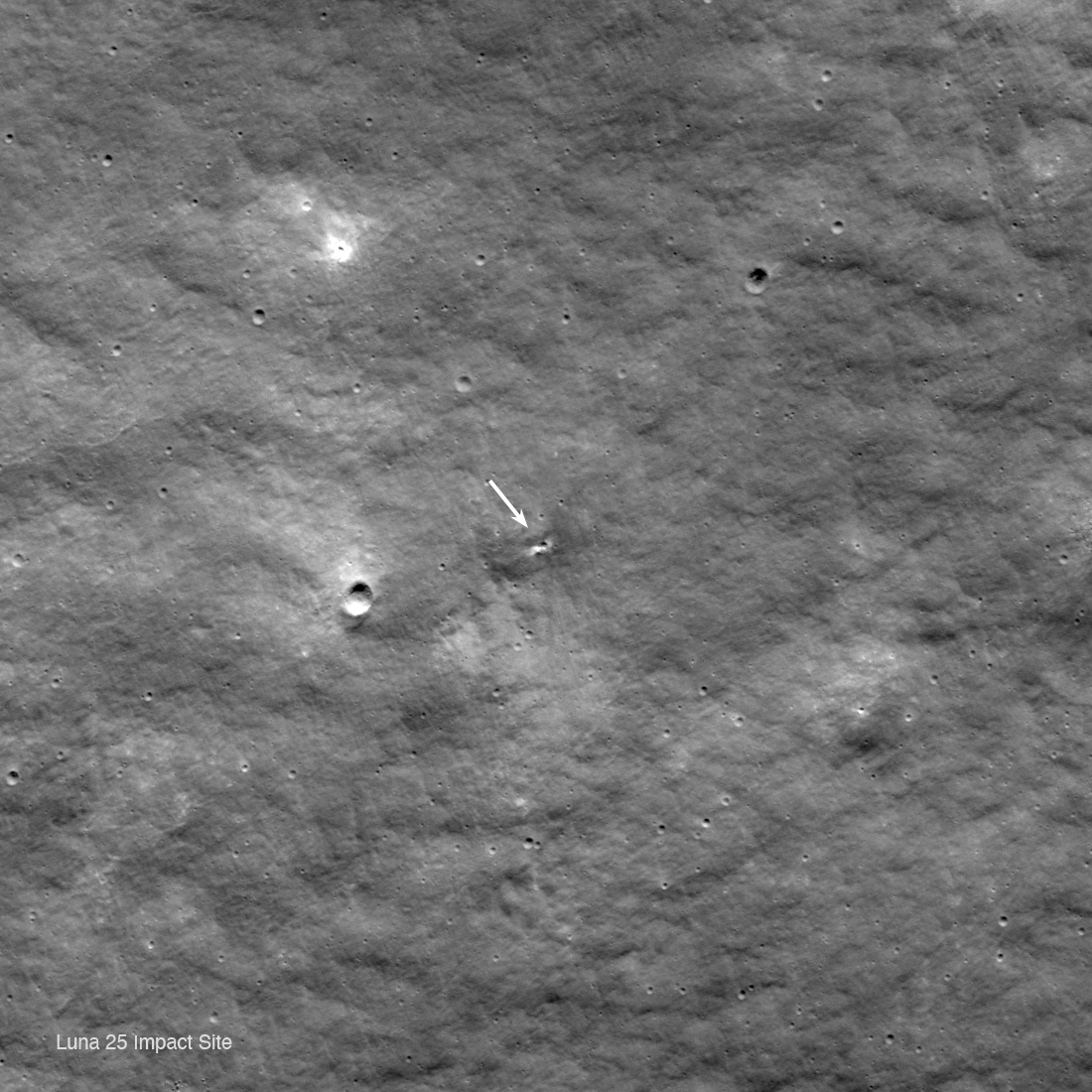
Analysis of the image, coupled with those of the crash site taken by LRO in June 2022, reveal the crater created by Luna 25’s impact is some 10m in diameter, with ejecta thrown out from a bright new scar on the Moon’s face. A sad end to a promising mission.
This article is extremely well-done with the space efforts of several nations, including the U.S. May I share it with my blog readers?
LikeLiked by 1 person
Thank you – and certainly, with due citation, please 🙂 .
LikeLiked by 1 person
Thank you!
LikeLike